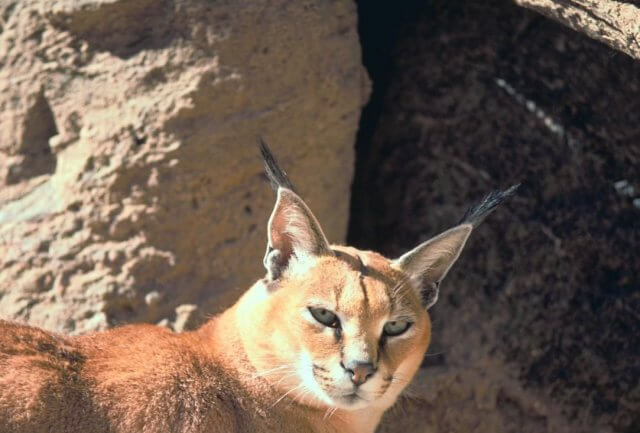10 Fascinating Facts about Caracals You Need to Know
Facts about Caracals You Need to Know
Caracals, also known as desert lynxes, are medium-sized wild cats that inhabit various regions of Africa, the Middle East, and parts of Asia. These elusive creatures have captivated the attention of wildlife enthusiasts and researchers alike. In this article, we will explore ten fascinating facts about caracals that will leave you in awe of their unique characteristics and behaviors.
1. Impressive Physical Attributes
Caracals are known for their striking appearance and physical prowess. They have a compact and muscular body, with long legs and a short tail. One of their most distinctive features is their tufted ears, which can grow up to 2 inches in length. These tufts serve as a form of communication and help them express their emotions.
2. Exceptional Jumpers
Caracals are renowned for their incredible jumping abilities. They can leap up to 10 feet in the air to catch birds in flight. This remarkable skill is attributed to their strong hind legs and flexible spine, which enable them to perform such impressive feats.
3. Efficient Hunters
Caracals are skilled hunters and have a diverse diet. They primarily feed on small to medium-sized mammals, such as rodents, hares, and antelopes. Their hunting technique involves stalking their prey and then pouncing on them with great speed and precision. They are also known to be excellent climbers, allowing them to access prey in trees.
4. Exceptional Hearing
Caracals possess exceptional hearing capabilities, thanks to their large and highly sensitive ears. They can rotate their ears independently, allowing them to locate the exact position of their prey, even in dense vegetation. This acute sense of hearing gives them a significant advantage when hunting.
5. Nocturnal Creatures
Caracals are primarily nocturnal animals, meaning they are most active during the night. This behavior helps them avoid the scorching heat of the day in their natural habitats, which are often arid and desert-like. Their nocturnal lifestyle also allows them to take advantage of the cover of darkness when hunting.
6. Solitary Lifestyle
Caracals are solitary animals and prefer to live and hunt alone. They establish territories that can range from 5 to 30 square miles, depending on the availability of resources. These territories are marked with scent markings and vocalizations to deter other caracals from entering their domain.
7. Vocal Communication
While caracals are generally silent animals, they do communicate through a range of vocalizations. These include hisses, growls, purrs, and a unique call known as “chirping.” The chirping sound is often heard during courtship or when a mother is communicating with her kittens.
8. Domestication History
Caracals have a long history of being tamed and kept as pets. In ancient Egypt, they were highly regarded and even worshiped. Pharaohs would often keep caracals as companions and hunting partners. Today, some individuals still keep caracals as exotic pets, although this practice is controversial and often illegal due to the challenges of providing proper care for these wild animals.
9. Threats and Conservation
Caracals face various threats in the wild, including habitat loss, poaching, and conflicts with humans. As their natural habitats continue to shrink, they are forced to adapt to new environments or face extinction. Several organizations and conservation efforts are working towards protecting caracals and their habitats to ensure their long-term survival.
10. Cultural Significance
Caracals hold cultural significance in many regions where they are found. In some African cultures, caracals are believed to possess mystical powers and are associated with spiritual beliefs. They are often depicted in traditional art and folklore, symbolizing strength, agility, and independence.
and folklore, symbolizing strength, agility, and independence.
Summary
Facts about Caracals: Caracals are fascinating creatures with a range of unique characteristics and behaviors. Their impressive physical attributes, exceptional hunting skills, and nocturnal lifestyle make them formidable predators. Despite facing numerous threats, caracals continue to captivate our imagination and hold cultural significance in various regions. It is crucial to raise awareness about their conservation needs and work towards protecting their habitats to ensure their survival for future generations.
Read More About Caracals From Wikipedia




